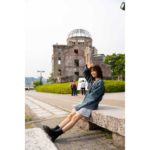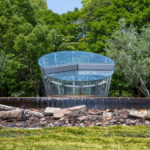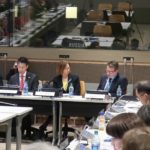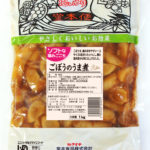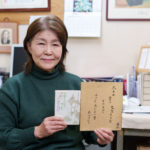Q6 What systems or research/support institutions were formed to provide medical care for A-bomb survivors?
 Legislation
Legislation
In March 1954, the crewmembers of a Japanese fishing boat, the Daigo Fukuryu Maru (Lucky Dragon No.5), were exposed to the radiation of the American hydrogen bomb tests at Bikini Atoll in the Pacific Ocean. In response to this incident, a movement to ban nuclear bombs was launched and A-bomb survivors began taking action requesting national support in order to cover the costs of their medical treatment and for assistance with their living expenses. As a result, the A-bomb Survivors Medical Care Law was enacted in 1956, and enabled survivors to receive health examinations and medical care by using national funds. The act was later amended in 1960, allowing some survivors to receive medical benefits for support with their living expenses. However, there were criticisms that the survivors eligible to receive these benefits was limited under certain conditions and that the livelihood support provided was insufficient. In 1968, the A-bomb Survivors Special Measures Law was enacted, enabling victims to receive special and healthcare allowances in addition to medical benefits.
However, there were still limits on distribution based on income, age and others factors. In 1995, the Atomic Bomb Survivors’ Support Law was enacted by combining the A-bomb Survivors Medical Care and the A-bomb Survivors Special Measures laws. Through this law support for survivors expanded—to cover more than previous two laws—by eliminating the income limit, enabling survivors to receive allowances that included livelihood support and benefits for bereaved families of A-bomb victims.
Research for the medical treatment of A-bomb survivors
Doctors in Hiroshima began provided medical treatment to A-bomb survivors immediately after the A-bomb attack. In January 1953, Hiroshima City and the Hiroshima City Medical Association established the Hiroshima Atomic Bomb Survivors’ Treatment Council (ABSTC) (currently the Hiroshima Atomic Bomb Casualty Council), to offer free medical treatment and health checkups for survivors.
In 1956, the Hiroshima Atomic-bomb Hospital of the Hiroshima Red Cross Society (currently the Hiroshima Red Cross Hospital & Atomic-bomb Survivors Hospital) opened to provide medical services to those suffering from the aftereffects of radiation exposure. In 1961, the Research Institute for Nuclear Medicine and Biology (currently the Hiroshima University Faculty of Medicine, Research Institute for Radiation Biology and Medicine) was established at Hiroshima University to conduct fundamental research on issues such as the impact of radiation on the human body.
In 1947, the President of the United States issued a directive to continue carrying out investigations on the aftereffects of radiation, and the secretariat of the Atomic Bomb Casualty Commission (ABCC) was established. In 1950, an institute was established in Hijiyama district to carry out genetic research on survivors. However, these activities were criticized by survivors, who felt they were only being studied and not offered treatment. In 1975, the Japan and U.S. governments reached an agreement to reform the organization into the Radiation Effects Research Foundation (RERF) and have it continue doing researching survivors.
In 1991, organizations engaged in medical treatment for survivors and research on the aftereffects of radiation in Hiroshima worked together to launch the Hiroshima International Council for Health Care of the Radiation-exposed (HICARE), which provides training for overseas medical providers and sends professionals to overseas locations.
Inquiries about this page
Hiroshima Prefectural Office
Street address:10-52, Motomachi, Naka-ku, Hiroshima-shi, Hiroshima-ken, 730-8511
Tel:+81-(0)82-228-2111



